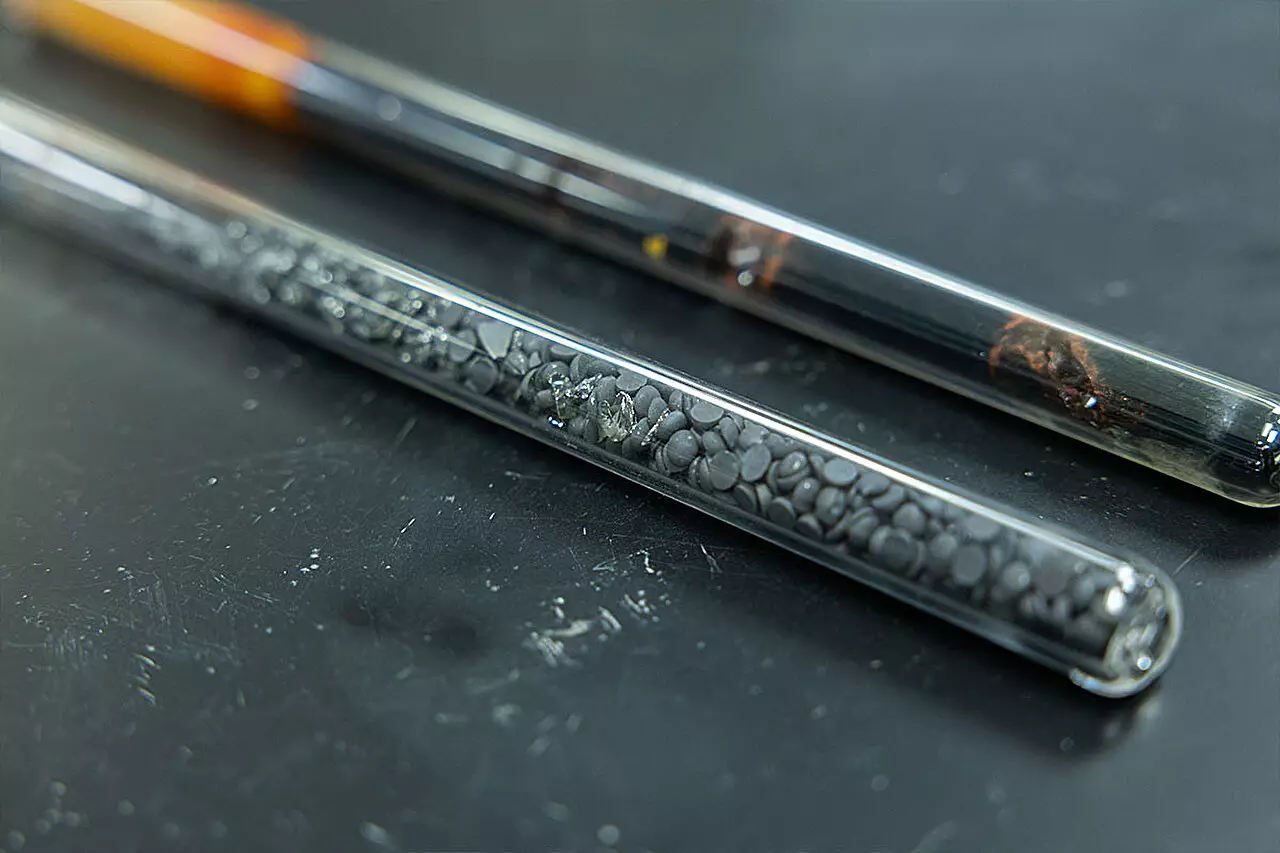In an age where technological advancement often feels limited to the digital realm, breakthroughs in material science continue to present thrilling new frontiers. A case in point is the recent research from the University of Central Florida (UCF) that has uncovered the remarkable properties of self-healing chalcogenide glass. This innovation not only defies the usual boundaries of traditional materials but also offers a tantalizing glimpse into applications previously relegated to the realm of science fiction. The combination of high-tech features with real-world applicability could represent a transformative leap for numerous industries, including aerospace and nuclear energy.
Chalcogenide glass, which is formed from elements like sulfur, selenium, and tellurium, represents a shift in material composition. Unlike conventional glass made from silica, these specialized materials are alloys that boast unique optical properties and have promising applications in infrared technologies and sensors. Such glasses can be finely engineered to optimize specific attributes, allowing them to serve in environments that traditional materials cannot withstand.
Self-Healing Mechanics: A Nature-Inspired Breakthrough
The core of this innovation lies in the self-healing properties exhibited by the chalcogenide glass, especially when subjected to intense gamma radiation. Kathleen Richardson, a professor and leader in this research at UCF’s College of Optics and Photonics, articulated a fascinating principle: under duress from gamma radiation, the atomic structure of this unique glass undergoes a transformation.
What makes this technology compelling is not merely the material’s capacity to heal itself but the mechanism through which this occurs. The relatively large atoms in chalcogenide glass create weak bonds that can become distorted due to high energy exposure. Surprisingly, over time, these bonds can relax and re-form at room temperature, effectively “healing” the material. This property takes inspiration from biological systems that demonstrate self-repair abilities, offering a model that merges the best of nature’s resilience with technological progress.
Expanding Applications in Extreme Environments
The implications of self-healing chalcogenide glass are vast and profound. The potential to withstand extreme environments, such as those found in outer space or radioactive facilities, paves the way for significant advancements in how we design and deploy sensors and optical systems. As we push the boundaries of space exploration or navigate the complexities of nuclear technology, materials capable of self-repair could buffer wear and tear, significantly extending operational lifespans and maintaining the integrity of equipment.
Richardson and her team have illustrated that these special glasses may be integral in shaping the future of infrared systems. As traditional materials become scarce and costs continue to rise, the search for viable and cost-effective alternatives has never been more critical. This research not only proposes solutions but also expands the horizons of what is attainable with engineered materials.
Collaboration as the Engine of Progress
One cannot overlook the collaborative nature of this research, which brought together experts from diverse institutions, including Clemson University and the Massachusetts Institute of Technology (MIT). Such synergy is increasingly necessary in modern science; breakthroughs in complex material designs often stem from the merging of perspectives and expertise.
Myungkoo Kang, a former UCF colleague now pursuing his academic journey, emphasized the importance of accumulated knowledge gained through shared efforts. The collaborative spirit showcased here reflects a growing recognition within scientific communities: talent and innovation often thrive in environments that foster teamwork. This experiment serves as a model for how transinstitutional cooperation can yield significant advancements, further energizing the scientific discourse.
The Future Landscape of Material Science
In an ever-evolving technological landscape, the study of self-healing chalcogenide glass emerges as a critical turning point for material science. Beyond being merely an interesting subject for academic inquiry, this research provides a foundational understanding to pursue a range of further developments. Kang’s vision of creating novel ceramics with irradiation-induced properties underscores the potential for new applications, adding an exciting dimension to the ongoing exploration of chalcogenide materials.
Whether in telecommunications, satellite communications, or innovative medical imaging technologies, the demand for materials that can withstand harsh conditions while also adapting to changes in their environment will undoubtedly increase. As we advance, self-healing glass could lead to more resilient technology equipped to meet the challenges of tomorrow.
With such remarkable innovations on the horizon, it is clear that the trajectory of material science is poised for exhilarating growth, guiding us to a future that until now was only a figment of our imagination.

